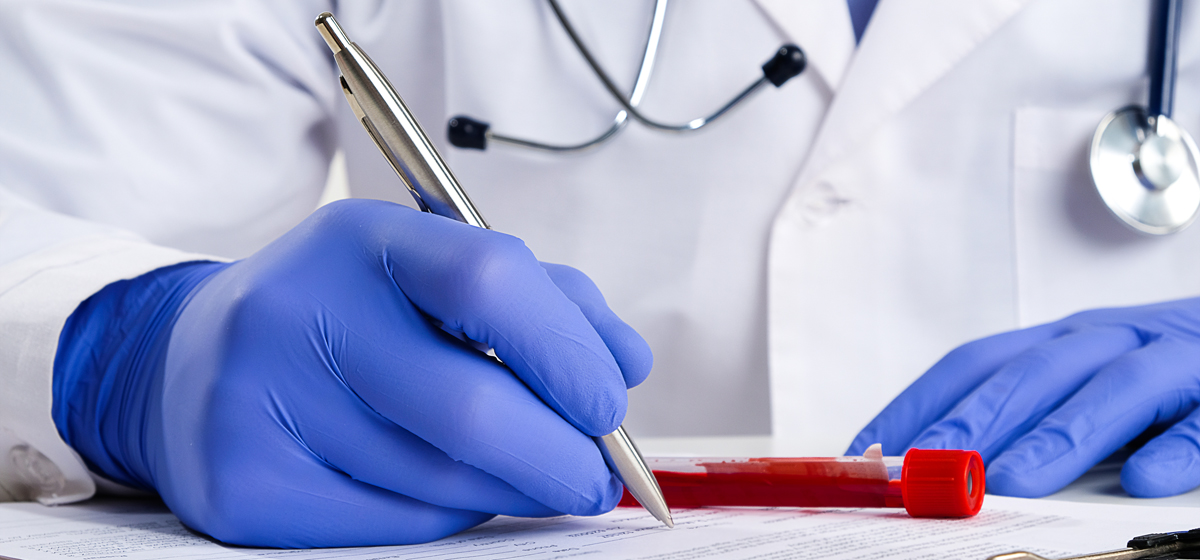Haematology
Doctor List
Prof. Dr. Tufan Kanti Dolai, MD(Medicine, Gold Medalist) DNB(Medicine) DM(Clinical Haematology), AIIMS, New Delhi, MBBS
Dr. Tusti Ganguly, MBBS, DGO, MD (Paediatric Medicine) & DM (Clinical Haematology) (Full Time Consultant)
Leukaemia /Blood Cancer
In leukaemia the bone marrow makes abnormal blood cells that grow out of control, get into the blood, and travel around the body. It does not make the normal blood cells that our body needs. This causes symptoms.
There are different types of leukaemia. Some types are seen more frequently in children and young adults and some types are predominantly seen in old adults.
What are the symptoms of leukaemia?
The most common symptoms are:
Feeling very tired and weak
Bleeding more easily than usual
Getting fevers or infections more easily than usual
Bone pain
Swollen lymph nodes (bean-shaped organs) that you can see or feel under your skin
Is there a test for leukaemia?
Yes. The doctor will ask about symptoms and do an exam. He or she will also do:
Blood tests.
A bone marrow biopsy – For this test, a doctor takes a very small sample of the bone marrow. Then another doctor looks at the sample under a microscope to check for cancer cells.
How is leukemia treated?
The right treatment will depend on the type of leukaemia he or she has. Treatment for leukaemia can include one or more of the following:
Chemotherapy
Bone marrow transplant (also called "stem cell transplant")
How long does the treatment last ?
It depends on the type of leukaemia. Most childhood leukaemia needs about 2 to 3 years to finish treatment.
What happens after treatment?
Many childhood leukaemia can be cured if detected early and treated by chemotherapy.
Lymphoma
Lymphoma is a cancer of the lymphatic system. The lymphatic system is made up of organs all over the body that make and store cells that fight with pathogens.
When people have lymphoma, the abnormal cells collect in small, bean-shaped organs called lymph nodes. This causes the lymph nodes to swell.
There are different types of lymphoma. Some types grow very slowly. Other types grow much faster. Sometimes, people start out with a slow-growing type of lymphoma that later becomes fast-growing.
What are the symptoms of lymphoma?
The first sign of lymphoma is often one or more large, swollen lymph nodes. These swollen lymph nodes are usually not painful. They are often in the neck, groin, armpit, or abdomen.
Other symptoms of lymphoma include the following:
Fever
Weight loss
Night sweats that soak your clothes
Is there a test for lymphoma?
Yes. Your doctor will do an exam and ask about your symptoms. He or she might order other tests, including:
Lymph node biopsy
Blood tests and Bone marrow biopsy.
CT scan, PET scan, or other imaging tests
How is lymphoma treated?
Doctors can treat lymphoma in different ways. People with some forms of lymphoma get treated right away. But people with lymphoma that is growing slowly and not causing symptoms often do not need treatment at first.
People with lymphoma often have one or more of the following treatments:
Chemotherapy
Immunotherapy
Radiation therapy
Bone marrow transplant (also called "stem cell transplant")
What happens after treatment?
Few types of lymphoma can be completely cured and rest can be controlled efficiently with this modern therapy.
Multiple myeloma
Multiple myeloma is a cancer of plasma cells, type of white blood cell. When people have multiple myeloma, the bone marrow makes too many of these plasma cells causing symptoms.
What are the symptoms of multiple myeloma?
Bone pain or bones that break easily
Nausea, vomiting, confusion, or feeling more thirsty than usual
Feeling more weak, tired, or short of breath, anaemia
Numbness, tingling, or weakness in the chest, lower back, or legs
Getting infections more easily
Losing weight
Sometimes, symptoms of multiple myeloma can be a medical emergency. See a doctor immediately if you have the following:
Severe back pain
Weakness, numbness, or tingling in the legs
No control over your bladder or bowel (that is a new problem)
Is there a test for multiple myeloma?
Yes. Your doctor or nurse will do an exam and tests. Tests can include:
Blood or urine tests
Bone marrow biopsy
Imaging tests, such as X-rays, CT scans, PET scans, or MRI
How is multiple myeloma treated?
People with multiple myeloma often have 1 or more of the following treatments:
Chemotherapy
Steroid medicines
Medicines called "Immune Modulating Medicines"
Bone marrow transplant
What happens after treatment?
Treatment does not usually cure the disease, but it can reduce symptoms and help people live longer. Follow-up tests can include blood tests, urine.
Anaemia
Anaemia is the term doctors and nurses use when a person has low haemoglobin or too few red blood cells. Red blood cells are the cells in your blood that carry oxygen. If you have too few red blood cells, your body does not get all the oxygen it needs.
Anaemia can happen for a few reasons. Common reasons are:
Nutritional Anaemia- the most common cause of which is iron deficiency anaemia.
Anaemia due to immature death of red blood cells- e.g. Haemolytic anaemia, Thalassemia.
Chronic diseases for e.g. Kidney disease
What are the symptoms of anaemia?
Feel tired or weak, especially if they try to exercise or walk up the stairs
Have headaches
Have chest pain or trouble in breathing
Is there a test for anaemia?
Yes, your doctor or nurse can test your blood for anaemia. The things they most often check called the "Complete Blood Count" or "CBC."
How is Anaemia treated?
The first step in treatment is to find out the cause of anaemia. Whether your anaemia is caused by blood loss or other causes. If so, your doctor or nurse will want to find out why you are bleeding.
Whatever the cause of anaemia, your doctor can treat it by giving medicines. If the anaemia is severe, you might need a blood transfusion. You might also need treatment for the cause of the bleeding.
Aplastic anaemia
Aplastic anaemia happens when your body stops making all 3 types of blood cells at the same time.
What causes aplastic anaemia?
Aplastic anaemia is caused by damage to your bone marrow. Some people are born with damaged bone marrow. In older children or adults, many things can damage bone marrow, including:
Certain medicines
Certain chemicals
Infections from certain viruses
Problems with your body's infection-fighting system (also called the "immune system")
But for many people, doctors do not know the cause of aplastic anaemia.
What are the symptoms of aplastic anaemia?
Pale skin or a pale colour in the tissue that lines the inside of the eyelids
Feeling very tired
A fast heartbeat
Trouble breathing
Headache and muscle pains
Recurrent infections
Have more bruising or bleeding than normal
Is there a test for aplastic anaemia?
Yes. The tests include:
Blood tests, including a "Complete Blood Count" (also called a "CBC")
Bone marrow biopsy
If your doctor thinks a genetic condition might be causing your aplastic anaemia, he or she might do other tests, too.
How is aplastic anaemia treated?
The treatment depends on the cause of your aplastic anaemia. Treatment can include:
Stopping medicines that caused the problem
Staying away from toxic chemicals
Immunosuppressive medicines
Blood or platelet transfusion
Bone marrow transplant (also called a "stem cell transplant")
Thalassemia
Thalassemia is a condition that affects the red blood cells and it is a life-long condition that people are born with. It is caused by an abnormal gene. There are many different types of thalassemia, depending on which gene is affected and how severe the anaemia is. Beta thalassemia major is one serious form.
What are the symptoms of beta thalassemia major?
Symptoms usually start after a baby is a few months old. Symptoms can include:
Pale skin
Not growing as much as expected
Swelling of the belly
The skin or white part of the eyes turning yellow
The bones of the face or skull being wider than normal
Is there a test for thalassemia?
Yes. A blood test can show if someone has thalassemia, and what type they have.
How is beta thalassemia major treated?
People with beta thalassemia major and other types of thalassemia that involve severe anaemia are treated with blood transfusions.
When people get a lot of blood transfusions, their body gets too much iron. Too much iron can damage the heart and liver. Treatment to get rid of this extra iron is called "iron chelation." Doctors can use different medicines for iron chelation.
Severe thalassemia can sometimes be cured with a procedure called a "bone marrow transplant." This is also called a "stem cell transplant." Some people with beta thalassemia major will need surgery to remove the spleen.
What can people with thalassemia do to stay healthy?
People with all types of thalassemia should:
See their doctor for regular follow-ups, and follow all instructions about tests and treatment.
Avoid taking vitamins or supplements with iron in them.
Haemophilia
Haemophilia is a condition that keeps blood from clotting normally. If blood doesn't clot normally, people can bleed very easily or much more than normal. The bleeding can sometimes be life-threatening.
Haemophilia is a life-long condition that a person is born with. It is caused by an abnormal gene. Boys and men are most likely to have haemophilia. It is very rare in girls or women.
Haemophilia can be mild or severe. There is no cure for the disease, but it can be managed with different treatments.
What are the symptoms of hemophilia?
People with mild haemophilia usually bleed more than normal after an injury, procedure, or surgery.
People with severe haemophilia also bleed more than normal after an injury, procedure, or surgery. But they can also have bleeding that happens for no reason at all. This type of bleeding usually happens in a joint. The joints most often involved are the ankles, knees, and elbows. Blood in a joint can cause pain, swelling, stiffness, and trouble moving the joint. Over time, repeated bleeding in a joint can lead to long-term joint pain and damage.
Symptoms can also arise from bleeding in other parts of the body. These can include:
Blood in a bowel movement
Blood in the urine
Belly pain (from bleeding into the belly wall)
Bruises or bleeding in a muscle
Bleeding in the brain or spinal cord
Is there a test for haemophilia?
Yes. Your doctor or nurse can check for haemophilia by doing different blood tests.
How is haemophilia treated?
Treatment depends on how severe a person's haemophilia is. It also depends on whether the person is going to have a procedure or surgery. The main treatment for haemophilia is called "factor replacement therapy."
Quick links
- Emergency Services
- International Patient Services
- Corporate Tie-Up
- TPA & Cashless Facilities
- Find a Doctor




















